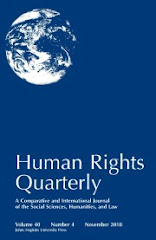The killing of Osama bin Laden in Pakistan in May 2011 and Anwar al-Aulaqi in Yemen in September 2011 both raise the question of when the killing of an identified individual posing a threat to a nation-state is lawful. Although it has not yet been forced to publicly defend either killing in any great detail, the Obama Administration has insisted on the legality of both operations by deploying an amalgam of legal and rhetorical arguments that explicitly or implicitly invoke multiple bodies of law. Indeed, the legality of such targeted operations can be evaluated along a number of dimensions under public international law devoted to the jus ad bellum, under international humanitarian law and the jus in bello, under international human rights law, and under the applicable domestic legal regimes. This multiplicity of legal regimes invites a "mixing and matching" of doctrinal elements that blurs the distinctions between the various paradigms and can lead to doctrinal imbalances.
In the light of the legal indeterminacy surrounding these two operations, this article endeavors to systematically tease out the various arguments advanced in their defense and to map the contiguous and overlapping legal regimes that speak to the killing of these two men. I compare the legality of the two operations primarily under international law, leaving to others to develop whatever domestic constitutional limitations may exist by virtue of the 4th and 5th Amendments to the U.S. Constitution. The paper outlines several doctrinal pathways within international law that lead to the conclusion that both operations were legal. Along the way, I identify established landmarks in positive law. Reaching the ultimate destination, however, requires one to traverse uncertain terrain by deploying legal theories that remain under-developed, in flux, and contested. At these crossroads, the necessary arguments often do not enjoy textual support in the relevant treaties or reflect consistent state practice or opinio juris. Nor are there authoritative judicial pronouncements that provide validation. Furthermore, this expedition requires one to navigate between overlapping legal regimes with no compass to help resolve potential conflicts of law that arise. In my accounting of this journey, I provide a rather cursory treatment of established law and linger more at those junctures that could lead to a conclusion of illegality because there is a diversity of viewpoints in the literature. All told, the law can be made to work in defense of the United States' actions, but there are points along the way at which an authoritative decision-maker might reach a defensible contrary conclusion.
Monday, February 13, 2012
Van Schaack: The Killing of Osama Bin Laden & Anwar Al-Aulaqi: Uncharted Legal Territory
Beth Van Schaack (Santa Clara Univ. - Law) has posted The Killing of Osama Bin Laden & Anwar Al-Aulaqi: Uncharted Legal Territory (Yearbook of International Humanitarian Law, forthcoming). Here's the abstract:





